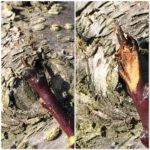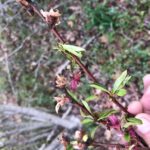Pesticide Credits Approved – #CORE(1); #10(6); #PP2(7); #1A(7)
Date: March 4, 2025 (Tuesday)
Location: Gloucester County Govt. Services Building #A, 1200 N. Delsea Dr., Clayton, NJ 08312
Registration: $20.00 (Checks only, made out to Rutgers University, can be paid at the door but pre-registration required). Lunch, Coffee, and Pastries Included. Required by March 3. Contact: (856) 224 – 8030 or Email: jmedany@co.gloucester.nj.us
PROGRAM
8:30 am Registration, Coffee and pastries
8:50 am Welcome and Opening Remarks
Hemant Gohil, County Agent II, RCE of Gloucester County, Rutgers NJAES
9:00 am Multi Pest Management in the Orchard
Anne Nielsen, Extension Specialist, Fruit Entomology, Rutgers NJAES
9:30 am Bacterial Spot Management in the Peach Orchard.
Kari Peter, Extension Specialist, Tree Fruit Pathology, Penn State University.
10:00 am Understanding how irrigation water can be a source for soilborne diseases in the orchard
Kari Peter, Extension Specialist in Tree Fruit Pathology, Penn State University.
10:30 am Coffee Break
10:45 am Industry and USDA Updates
11:00 am An update on the Fruit IPM Program and summary of the 2024 season.
Janine Spies, Statewide Program Leader in Fruit IPM, Rutgers NJAES
11:30 am What can the Rutgers Plant Diagnostic Lab do for you?
Sabrina Tirpak, Laboratory Researcher, Plant Diagnostic Lab, Rutgers NJAES
Noon Lunch
1:00 pm Pesticide Handling and 2025 updates
George Hamilton, Extension Specialist in Pest Management, Rutgers NJAES
1:30 pm Peach Flower Thinning using ACC (Accede)
Shantanu Krishna Kumar, Assistant Professor of Tree Fruit, Penn State University.
2:00 pm Plant Nutrition and Causes of Bitter Pit Disease in Apple
Joseph Heckman, Extension Specialist in Soil Fertility, Rutgers NJAES.
2:30 pm 2024 Field Observations – peach varieties, overhead irrigation frost protection, hydro-cooling, post-harvest inking.
Hemant Gohil, County Agent II, RCE of Gloucester County, Rutgers NJAES.
Daniel Ward, Extension Specialist, Pomology, Rutgers NJAES.
3:00 pm Pesticide recertification credits and Adjourn
For questions, please get in touch with Hemant Gohil at 856-418-6538 or email at gohil@njaes.rutgers.edu
Send Check to Hemant Gohil, Rutgers Coop Extension, 254 County House Rd., Clarksboro, NJ 08020


